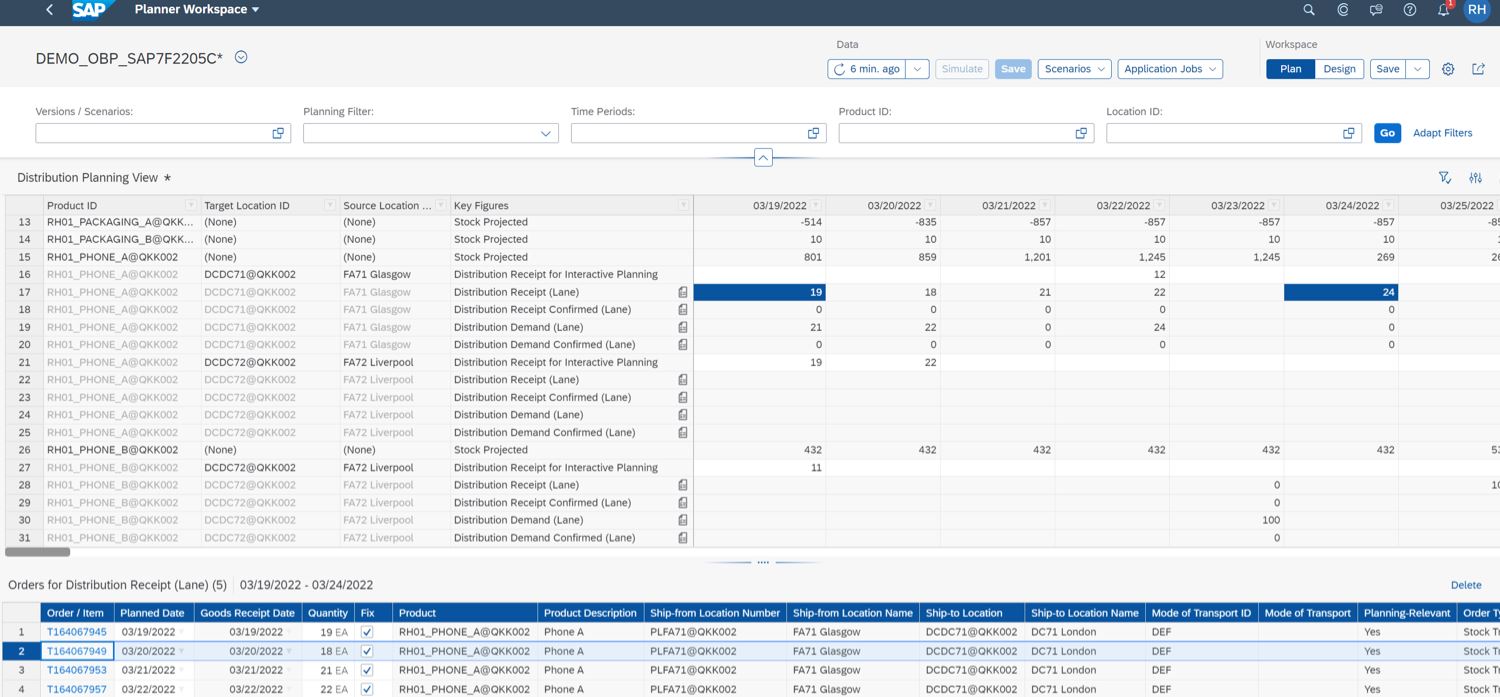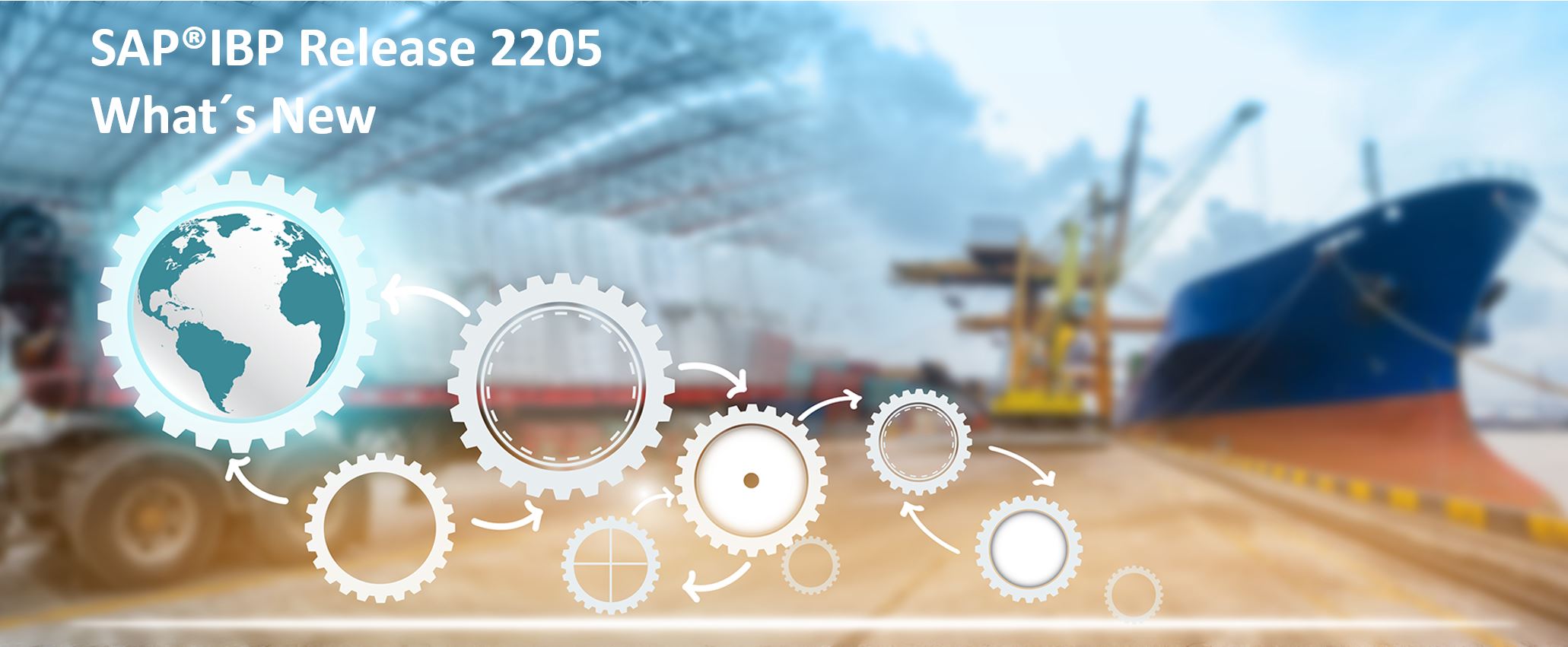
- SAP Community
- Products and Technology
- Supply Chain Management
- SCM Blogs by SAP
- SAP Integrated Business Planning for Supply Chain ...
Supply Chain Management Blogs by SAP
Expand your SAP SCM knowledge and stay informed about supply chain management technology and solutions with blog posts by SAP. Follow and stay connected.
Turn on suggestions
Auto-suggest helps you quickly narrow down your search results by suggesting possible matches as you type.
Showing results for
Advisor
Options
- Subscribe to RSS Feed
- Mark as New
- Mark as Read
- Bookmark
- Subscribe
- Printer Friendly Page
- Report Inappropriate Content
05-04-2022
2:01 PM
While SAP as a company can proudly look back on 50 years of innovation in enterprise software, we’ve also reached another milestone to be proud of:
Today, May 4th, 2022, SAP® Integrated Business Planning for Supply Chain 2205 has been generally released as planned.
In this release we’re delivering some features that take precision and flexibility in planning UIs and forecasting to a whole new level.
Check out some of the many highlights included in SAP IBP 2205:
Planning UIs
Increased Flexibility in Planner Workspaces: Flexible Time Axis
Using the flexible time axis, you can now set up your planning view to display time periods on different time levels in the same planning view in the Planner Workspaces app. For example, your planning view could display the current quarter in monthly periods, the next year in quarterly periods, while periods farther ahead in the future are displayed in annual periods.
You can add time-based totals and multiple time period levels to your planning views and this feature also supports telescopic planning views.
Increased Productivity with VBA Extensibility in the SAP IBP, add-in for Microsoft Excel
Extensibility is key to adjust to evolving and unique customer demands, specific use cases, UI requirements, and workflows.
In this release, we’re following up on these requirements by delivering further capabilities that allow you to extend the features provided by the SAP IBP, add-in for Microsoft Excel using Microsoft Visual Basic for Applications (VBA).
The new APIs can mainly be used to retrieve and update master data records. They allow you to include further logic in the planning view templates to display master data information or to change specific attribute values. You can, for example, configure a planning view template, where planners can change the value for the master data attribute “ABC Code” of one product, simply by double-clicking the cell.
As part of simple and easy-to-use APIs, we are also providing VBA samples that can be adjusted to your specific business needs. More APIs to reflect further business use cases are planned.

Interactive Planning on Orders Now Available in Planner Workspaces
You can now manually change, delete, fix, and unfix the following planned receipts directly from the Planner Workspaces app:
- Purchase requisitions
- Stock transfer requisition
- Deployment requisitions
- Planned orders
Order information like quantity and date can be changed for supported order-based planning key figures.
This feature gives planners the option to interactively change an existing plan to improve the planning results or to solve a problem. They can perform a simulation to review the updated orders and key figures. Planned receipts and key figures can be updated right there in the same app.

More Transparency with New Manage Planning Notes App
In the new Manage Planning Notes app, you can view and delete planning notes that have been created for a specific planning area. Planning notes are typically used to provide additional information for certain key figures and their values. The app provides a wide variety of filter capabilities. Searching planning notes by attribute values or search terms allow users to easily find related planning notes, for example, for a campaign or a certain product. With the help of “keywords”, you can categorize planning notes and easily find similar planning notes in the Manage Planning Notes app.
A systematic evaluation of planning notes helps to reveal potential process improvements. A list of planning notes can be a good basis for planners to jointly review current planning assumptions or critical changes.
Demand
Ultimate Freedom of Choice: Forecasting with Custom External Algorithms
You now have the option to boost the existing forecasting capabilities of SAP IBP for demand by integrating custom-built forecasting algorithms. The custom algorithm will be tightly integrated in the forecasting process of SAP IBP, including data aggregation and disaggregation, applying product lifecycle logic and a combined use with the SAP IBP forecasting algorithm in a best-fit model
Use cases include machine learning and algorithms not yet available in the standard solution, customized implementation of already existing algorithms, and use of additional data not present in the SAP IBP system.
The custom algorithm can be written in R, Python, or any other suitable tool. The data exchange between SAP IBP and the custom system is facilitated by an OData service.
Improved Forecast Accuracy: New Forecasting Algorithm for Intermittent Demand
The new Croston TSB algorithm can now be used to compute the forecast of intermittent demand. Compared to the classical Croston algorithm that’s already available in SAP IBP for demand, this new algorithm keeps track of both the demand level and the demand interval and allows to model when a product becomes obsolete.
Two separate parameters enable you to tune the demand level and demand interval forecasting.
The estimate of the probability of non-zero demand is updated every period, rather than just when demand occurs.

SAP IBP General
Better Planning Results with Intelligent Lead Time Prediction
By deriving the dynamic transport lead times from actual goods movement data and predicting the future lead times, you can now improve the quality of your planning results and make better decisions in SAP IBP.
Intelligent lead time prediction is modeled as a sample Machine Learning (ML) extension use case in SAP Data Intelligence and is delivered with an SAP BTP mission in SAP Discovery Center. The mission allows you to extract the historical lead times from goods movement data in SAP S/4 HANA and to analyze outliers and key influential factors for lead time changes. You can then train ML models using granular transport data, set up and execute AI algorithms that predict future lead times based on the corrected values, and upload the result to SAP IBP for planning and analysis.
This ML extension option helps drive better decisions, improve the quality of planning parameters considered by inventory and supply planning algorithms and enhance plan adherence by considering dynamic nature of the actual lead times and future trends as input to planning runs.
More Rapid Time to Value with New Simulate Key Figure Calculations App
The new Simulate Key Figure Calculations app allows you to speed up configuration by simulating configuration changes without having to activate the planning area. You can create and run simulations to check the correctness of each calculation step, from stored planning level to request level, including the interim calculation steps. You can also use this tool to test the correctness of calculations without having to activate the planning area. The simulation uses actual stored key figure data as input for the simulation.
The representation of the results is also very user-friendly: A calculation graph helps to understand the calculation chain and key figure data is displayed in an easy-to-read table.
More Information
Labels:
You must be a registered user to add a comment. If you've already registered, sign in. Otherwise, register and sign in.
Labels in this area
-
Business Trends
169 -
Business Trends
24 -
Catalog Enablement
1 -
Event Information
47 -
Event Information
4 -
Expert Insights
12 -
Expert Insights
41 -
intelligent asset management
1 -
Life at SAP
63 -
Product Updates
500 -
Product Updates
67 -
Release Announcement
1 -
SAP Digital Manufacturing for execution
1 -
Super Bowl
1 -
Supply Chain
1 -
Sustainability
1 -
Swifties
1 -
Technology Updates
187 -
Technology Updates
17
Related Content
- Working with supplier confirmations (table EKES) in cloud ready environment in Supply Chain Management Q&A
- Enhanced Shortcut Scenario SAP TM in Supply Chain Management Blogs by Members
- SAP Business Network for Logistics 2404 Release – What’s New? in Supply Chain Management Blogs by SAP
- SAP Named a Leader in the 2024 Gartner Magic Quadrant for Transportation Management Systems in Supply Chain Management Blogs by SAP
- Advanced Shipping and Receiving Simplifying the Connectivity in Supply Chain Management Blogs by Members
Top kudoed authors
| User | Count |
|---|---|
| 7 | |
| 4 | |
| 3 | |
| 3 | |
| 2 | |
| 2 | |
| 2 | |
| 2 | |
| 2 | |
| 1 |
